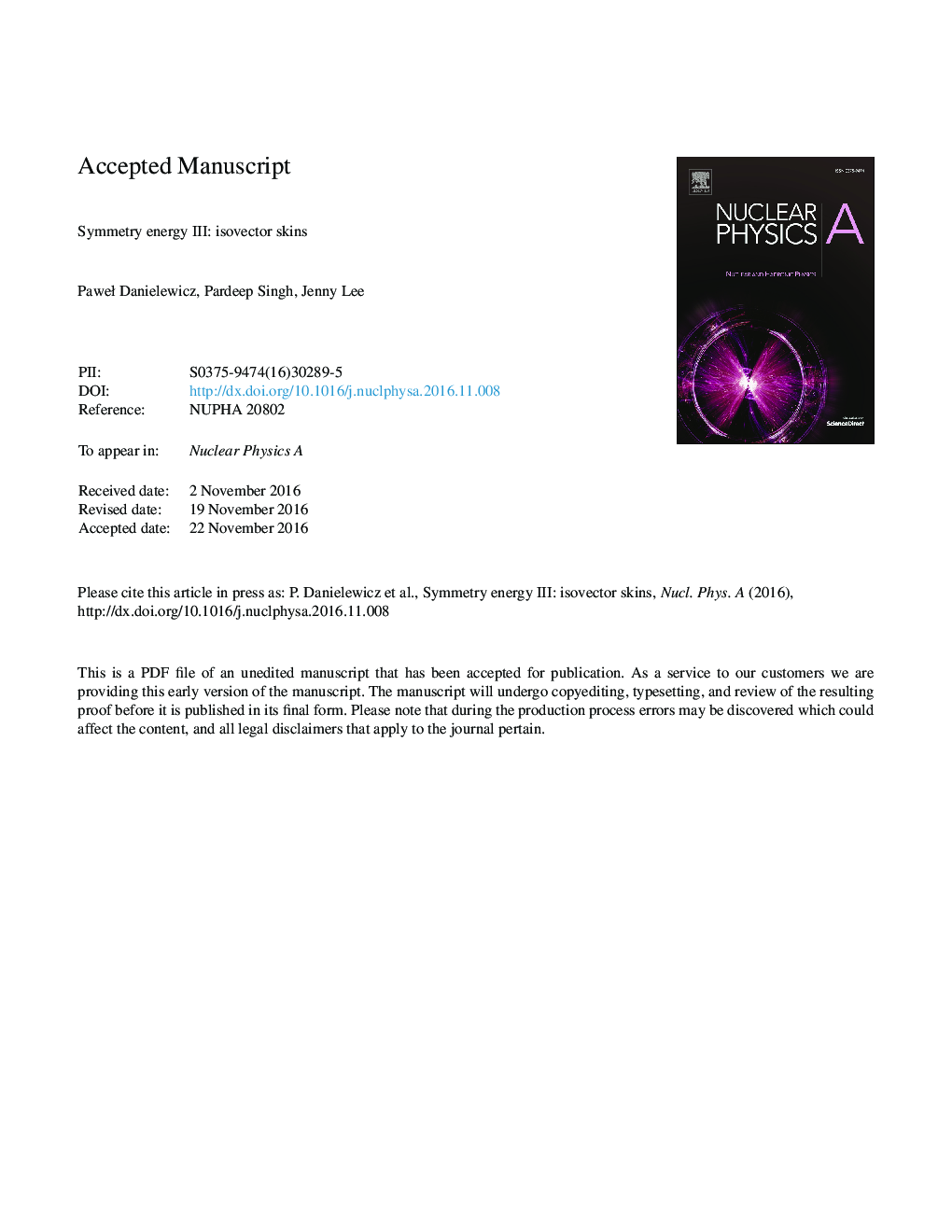| Article ID | Journal | Published Year | Pages | File Type |
|---|---|---|---|---|
| 5494105 | Nuclear Physics A | 2017 | 59 Pages |
Abstract
Isoscalar density is a sum of neutron and proton densities and isovector is a normalized difference. Here, we report the experimental evidence for the displacement of the isovector and isoscalar surfaces in nuclei, by â¼0.9fm from each other. We analyze data on quasielastic (QE) charge exchange (p,n) reactions, concurrently with proton and neutron elastic scattering data for the same target nuclei, following the concepts of the isoscalar and isovector potentials combined into Lane optical potential. The elastic data largely probe the geometry of the isoscalar potential and the (p,n) data largely probe a relation between the geometries of the isovector and isoscalar potentials. The targets include 48Ca, 90Zr, 120Sn and 208Pb and projectile incident energy values span the range of (10-50) MeV. In our fit to elastic and QE charge-exchange data, we allow the values of isoscalar and isovector radii, diffusivities and overall potential normalizations to float away from those in the popular Koning and Delaroche parametrization. We find that the best-fit isovector radii are consistently larger than isoscalar and the best-fit isovector surfaces are steeper. Upon identifying the displacement of the potential surfaces with the displacement of the surfaces for the densities in the Skyrme-Hartree-Fock calculations, and by supplementing the results with those from analyzing excitation energies to isobaric analog states in the past, we arrive at the slope and value of the symmetry energy at normal density of 70
Related Topics
Physical Sciences and Engineering
Physics and Astronomy
Nuclear and High Energy Physics
Authors
PaweÅ Danielewicz, Pardeep Singh, Jenny Lee,
